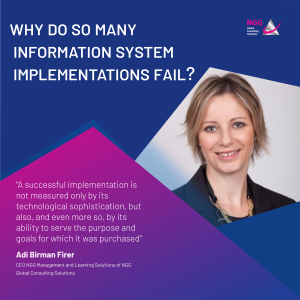Our managers expect us to be team players and soul players. But do those managers demand the same of themselves? Nili Goldfein, CEO at NGG Global Learning Solutions, explains why senior executives must also learn what teamwork is all about
The complexity of the post-modern world is challenging for us all. According to an African saying, if you want to go fast – walk alone; but if you want to go far – walk with a group.
For the first time in human history (to the best of our knowledge), five generations of people work together in the same offices. Women and minorities are claiming high-ranking managerial and key positions in many organizations. Due to these demographic changes, the business world is becoming increasingly complex (matrix structures, ad-hoc task teams, collaborations between competitors or with entities that are external to the organization, and more).
Decentralization, permutations and complexity require teamwork. Not the teamwork that we grew up with –where people work together for years, know each other’s strengths and weaknesses, and develop a rapport. This is an entirely different type of teamwork that includes ad-hoc teams, endless diversity, teams that are formed quickly for a certain purpose and then split up, etc.
Most managers grew up on the well-known Tuckman model, which is becoming increasingly irrelevant. The long, structured process of forming a team no longer exists. There are no conflicts that eventually lead to harmonic teamwork. Everything has changed. For employees to be fully committed to their jobs – what’s called engagement or passion in today’s managerial, organizational jargon, the business leader must successfully engage employees to a goal that they consider valuable enough; a goal that betters humanity, the planet, or the community. Or all of the above.
A tip for business leaders
Learn how to be part of a group and a team, regardless of who else is on the team. Develop the ability to connect quickly, to contribute, receive, work well – and then move on. Love what you have and then move on to the next project without any sentiments and learn to love the next assignment just as much. It’s a fluid world.
“Everyone you will ever meet knows something that you don’t” (Bill Nye)
And once again, here is a clip from the popular Kung Fu Panda movie (which has a surprisingly large amount of insight for the workforce). This time, learn about teamwork and managing diversity within a team. Because there is no team more diverse than the five wonderful characters in the movie.







